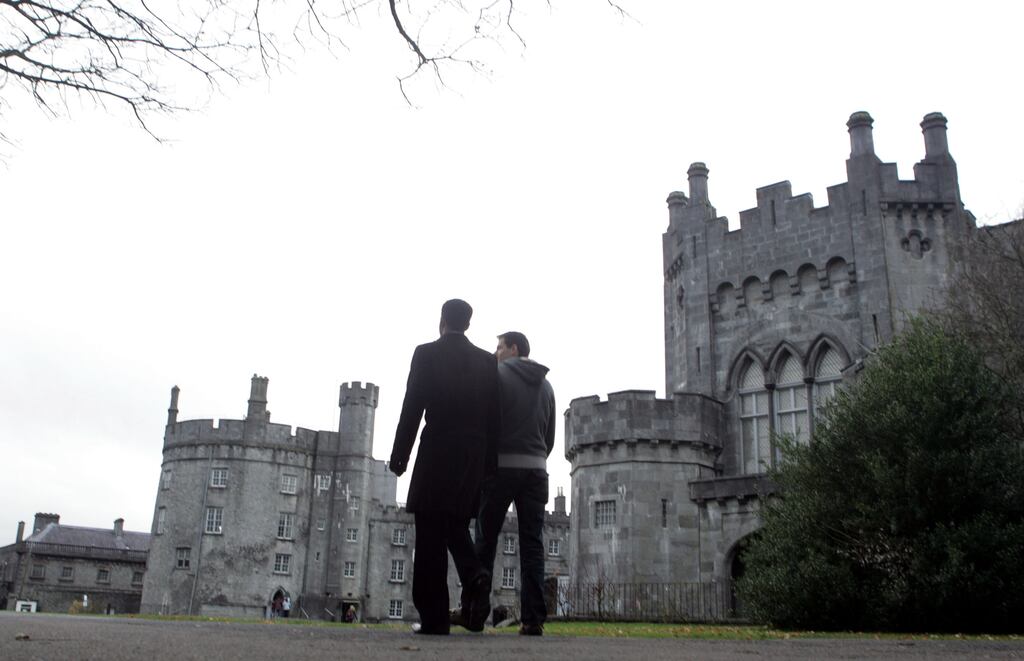Kilkenny suffered a bigger downturn in domestic tourism during the Covid-19 pandemic than any other part of the country, according to official figures.
A new report published by Fáilte Ireland shows Kilkenny recorded a 76 per cent drop in trips by Irish holidaymakers between 2019 and last year.
The number of people taking a holiday in the city and county in 2021 fell to 93,000 compared with the last full tourism year before the pandemic in 2019, when 387,000 native tourists took a break in Kilkenny.
It was the 11th most popular destination in Ireland in 2019 but slumped to 20th position last year with fewer breaks being taken only in Laois/Offaly.
What is the National Gallery’s scanner that cost €125,000 and what would it be used for?
‘We grew up Irish Catholic’: How Nicola Coughlan got raunchy Bridgerton scenes cut
The Last Showgirl review: Pamela Anderson has found the right role at the right time
‘I’m 50 this year and feel a bit like a teenager with my problem. My best friend has fallen in love’
Spending by Irish tourists to Kilkenny also dropped by 67 per cent to €16 million last year — down from €48 million in 2019.
The figures are based on a combination of the household travel survey by the Central Statistics Office and estimates on spending by Fáilte Ireland.
Other areas which experienced a reduction of about 60 per cent in terms of trips and expenditure by domestic tourists since the pandemic include Tipperary, Cavan/Leitrim, Louth/Monaghan and Meath.
Overall, the number of domestic holiday trips in 2021 was down 51 per cent to almost 5.7 million, with associated spending down 40 per cent to about €1.3 billion.
The Fáilte Ireland figures show the number of domestic holiday trips to Dublin was down 56 per cent last year to 783,000 compared with almost 1.8 million trips in 2019.
Spending by domestic holidaymakers in the capital in 2021 was down 47 per cent to €157 million.
While Dublin recorded the greatest number of trips by domestic visitors in both 2019 and 2021, tourism revenue from Irish holidaymakers is only the third highest after Cork and Kerry due to people taking shorter breaks in Dublin than other popular tourist regions.
Cork overtook Kerry last year as the most prosperous region for domestic tourism with estimated revenue of €167 million as income from Irish visitors taking a break in the kingdom fell by 46 per cent to €162 million.
Cork’s relative success was driven by a more modest reduction in the number of bed nights spent by domestic holidaymakers compared with most of the other main tourist regions.
The number of bed nights spent in Cork last year was down only 26 per cent compared with 2019 — compared with the national average of 39 per cent. In contrast, the number of bed nights spent in both Kerry and Dublin last year by domestic tourists was down by 46 per cent.
Only one county — Donegal — experienced an increase in tourism revenue from Irish holidaymakers last year. The figures show spending was up 6 per cent to €103 million, despite the fact that the overall number of people taking a domestic break in Donegal was down 35 per cent to 290,000.
The strong performance was largely driven by the fact that domestic tourists stayed an average of two extra days in Donegal for their holiday last year compared with 2019.
The Fáilte Ireland report shows the average length of a holiday in Donegal in 2021 was five days compared with 3.1 days before the pandemic.
Average length of stays also increased by more than one day in both Clare and Wicklow last year.
Meath was the only county during 2021 where the average stay for a domestic break was shorter than in 2019.
On average, holidaymakers to Meath spent only 1.5 days on a break in 2021, compared with 1.8 days before the pandemic.













